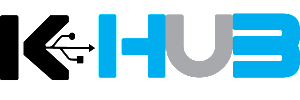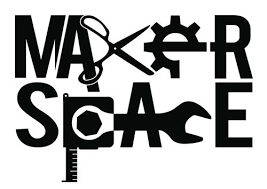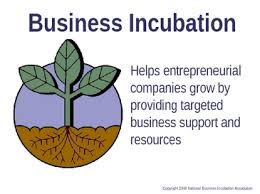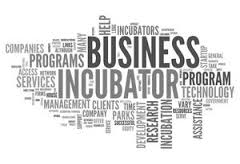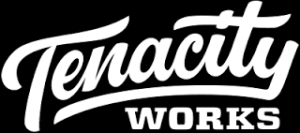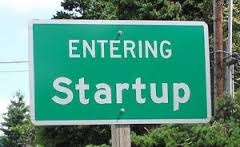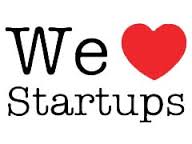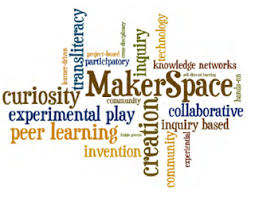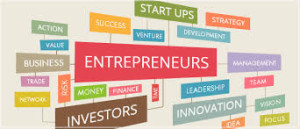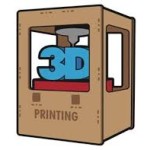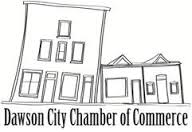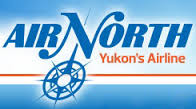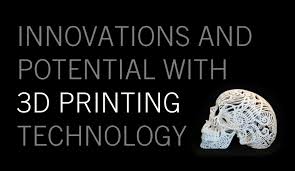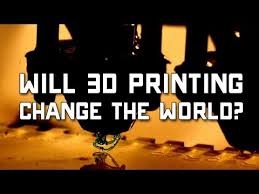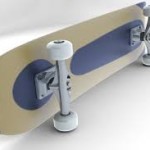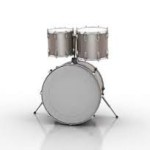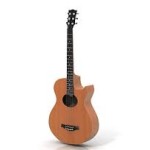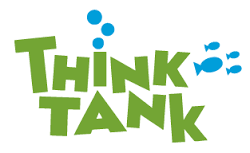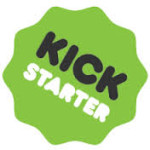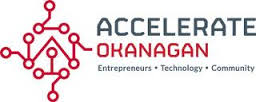An American in Kelowna – K-HUB is Making the Most of its Makerspace in the Okanagan Valley
I recently had a chance to sit down with Carla Mather, Founder and President of K-HUB & Kreative Core Social Marketing.
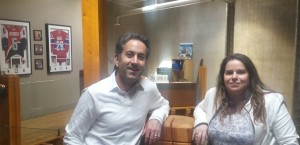
Our conversation focused exclusively on K-HUB – what it is and how Mather is incorporating it into Kelowna’s business landscape?! She has lofty ambitions and goals for her soon-to-be-opened makerspace located at 5-220 Neave Road (off Harvey + Sexsmith Road exit).
In a nutshell, K-HUB creates an environment where entrepreneurs, inventors, and start-ups can collaborate, access high-end manufacturing equipment, and share ideas and resources collectively in order to “help others build their companies as they help you build yours.” This business incubator will assist in “pushing the envelope” of light-bulb types into creating, innovating, and manufacturing new products and services while keeping overhead low.
Mather boils it down to a five-word concept: “Equipment, buying power, and tenacity.”
Copywriter Jim was equally tenacious in digging deep for all of K-HUB’s developmental details:
What is the derivation of the K-HUB name?
I get asked this all the time. First, I wanted something short and sweet that was easy for people to remember. Second, I wanted “HUB” as one of the words because we are a HUB that houses creative people and shares resources. Since my marketing company is Kreative Core Social Marketing, I thought of K-HUB being creative with a “K”.
I also knew that most people are going to assume that it stands for Kelowna HUB. I was fine with that because, to be honest, K-HUB stands for what “you” want it to be and what “you” make it. I want everyone to make it their own so they can tell others what K-HUB means to them. The more open you leave something the more it allows others to feel like it’s their space to come and “Kreate”.
What is your definition of a “Business Incubator?”
An Incubator can mean different things to different people. But if you want my quick-and-dirty version, it’s a space for businesses to start their ideas from inception to a stage where they can become viable and sustainable on their own. Incubators help provide space for start-ups, or growing businesses that are in a phase where they need help. Incubators cradle them, give them a safe home, and allow them to learn from others while they start to learn how to walk.
K-HUB is that place! It’s a place for people who want to start a business, people that want to grow a business, and people that want to invent new products and services in the Okanagan Valley. We are going to make it a safe place for everyone to collaborate, share, and innovate new ideas and possibilities that they only dreamed of doing.
You’ve talked about K-HUB being a Makerspace. A Makerspace is defined as a community-operated workshop where people with common interests – often in computers, technology, science, math, digital or electronic arts, and machinery – can meet, socialize and collaborate. Is this peer-to-peer learning environment comparative to your K-HUB vision?
In a nutshell, yes, that is correct. We are building a peer-to-peer learning environment. The only real difference that I am making is that we are focused on providing more resources than most other makerspaces out there. We are focused on two things – the community being “the makers” and entrepreneurs being the “incubated businesses”. We hope that over time they will be teaching each other and working together on projects.
I can definitely see how “makers” get carried away with ideas on fun projects they want to build. They always have super-cool techy ways to expand and want their projects to do ten different things all at the same time. But sometimes it takes them a long time to accomplish it because they don’t have a degree in engineering, or the coding background, or maybe it’s the designing side of things. If we have an engineer, software developer or architectural designer in the “incubated” space, then we can direct them to the right person that can help solve their issues.
On the reverse, if we have an “incubated” business that is working on building up its design firm and needs a physical model of its projects, we have “makers” that love 3D printing, robotics, laser cutters, and wood workers that could make that up for them in a matter of hours. I imagine that over time young “makers” finding their passions in life will get internships and jobs from the incubated businesses.
My version of a makerspace may not be what others believe a makerspace should be, but in reality “makers” and “entrepreneurs” are one in the same. We are Kreative innovators unleashing our ideas. We are building it on passion, sweat, and tears, and we love to do it with like-minded people that are equally passionate about the same stuff. We’re building the next industrial revolution and are proud to be a part of it. Whether it is something we build just for ourselves or for others, what differences does it make? We are doing it because we love inventing things, so why not do it together?!
What will K-HUB offer that will make it different in form, function, and benefits from others in the Makerspace community…..give us examples of the equipment you plan on bringing into the facility?
While we will have everything from expensive equipment like laser cutters to simple things that are used daily like screwdrivers, we plan on having a large range of 3D printers that print different kinds of plastics, metals, carbon fiber, wood, and circuit boards. We also know that simple everyday tools are in desperate need throughout the valley as there are several people that live and work in their condos. That’s why we are going to have all the basic woodworking tools from saws, miters, sanders all the way up to CNC machines.
Our problem is not about having a wide selection of equipment, but more the fact that some equipment does not mix well with other equipment. For example, we can’t do metalworking where there is woodworking because there would be too many sparks flying that could cause a fire. Instead, we hope to build several mini-spaces over time that will accommodate the different equipment people want and need to use.
3D prototyping and copying equipment are high on your list……why?
The large format printer and copying equipment is coming from another company in the north. I’m originally from Dawson City, Yukon. Let’s just say it’s very close to the Arctic Circle. Companies up there cannot buy equipment like this because there are no technicians around to fix it when it goes down. Manufacturers don’t sell equipment that can’t be serviced, so they are storing and letting us use this equipment because they can’t. In return, I receive files, print them, and then send them up on our local airline Air North direct from Kelowna.
As for 3D printing, who doesn’t want to play around with this technology these days? It costs are so low that it really allows for anyone to come and mess around building up ideas and turning their concepts into a reality. Kelowna Mayor Colin Basran recently toured our space and said he doesn’t know anyone here in the city that owns one. That’s interesting news, K-HUB will have several 3D printers here for people to use.
How and why did you choose the facility on Neave Road for K-HUB?
After trying my luck looking downtown, I decided that if I wanted to do this then I needed to think outside the box. When I came across the Neave space, I fell in love with the design of the building and thought about how much more I can do out here. We are close to the University and have tons of nearby connections already established.
When I started working with (current occupants) Kevin Edgecombe and Peter Liscia from Vision 4 Structures, I just knew I was working with the right people. They are developers and they get it! They have a clear vision for economic development. I mean you don’t go into that field if you don’t have vision. I also figured most people really don’t need to be located downtown when starting out. The way I see it, I would rather let my dollars get me more at this location rather than getting less bang at a downtown facility. Once we build momentum and get enough people working together, we can start developing something downtown.
What is the square footage of the K-HUB facility?
Just shy of 3,000 square feet.
How many total office spaces will K-HUB be offering?
We have a total of eight offices. They range in size from 86 sq. ft. to 177 sq. ft.
What kind of entrepreneurs/inventors/tinkerers are you trying to attract to K-HUB……and how are you finding them and/or how can they find you?
We are all makers of some sort – some are just more into it than others. I’m trying to work with a variety of companies and makers. Anyone that listens to my crazy ideas and has an interest in these types of equipment is going to be a leader in this new facility. We are already in the works with partnering with a skateboard/snowboard distributor to develop new boards. We are building another relationship with local recording artists for a line of 3D printed instruments like drums and guitars. I have developers building 66 acres of townhouses and condos wanting to use 3D printing for presenting the concept buildings.
As for the makers, they want laser cutters and CNC machines badly to take solid materials that can be reversed manufactured and do the total opposite of 3D printing. They are interested in building rockets, drones, and new designs for 3D printers.
K-HUB’s workspace will offer four distinguishable components: the Makerspace, the Incubator, the Rendezvous Room, and the Inception Room……can you outline each based on form, function, and benefits?
Sure, the makerspace is really just a warehouse full of equipment and workstations for people to build stuff. We have an open area on the main floor that will be used for heavy equipment like saws, CNC’s, lasers, and that kind of stuff. The mezzanine will be a classroom area for workshops and electronic builds like robotics, 3D printing, and Arduino assembly.
The Incubator has seven private offices, which will house start-ups, and small home-based companies looking to grow and collaborate. All incubated offices will have access to resources like affordable marketing packages, accounting/bookkeeping, business-development coaches, and more. We also will have 24 shared desks in an open area for what we call Incubabies. They are for makers that want to start working on a business plan for their ideas and for home-based companies that are looking to collaborate and build relationships with people that will help them make their company unique. They will be offered options for workshops on how to get started in developing a company, how to grow a company, and what resources they might need to push them in the right direction.
The Rendezvous Room is our board room/kitchen. Since both are used to meet up, discuss, and hang out, I thought the word suited the room. It’s a pretty good-sized room with an open concept layout so everyone can get engaged and interact during breaks.
As for the Inception Room, it will be our think-tank room and closed off from everyone. It will have couches, electronic whiteboards, and projectors for people to collaborate on a more personal level while ideas are being built. The Inception room is going to be the beginning of several innovative products here in the Okanagan Valley.
K-HUB’s business model will offer hardware and software developmental opportunities in two separate sides of the building…..please give us an example of a software development opportunity and what you have in mind for the hardware side?
While there are so many software companies in Kelowna right now, the playing field is bound to get bigger. Although we are not focused on software development, we have already had some start-up companies inquire about developing software specific to hardware we will be using in the makerspace. For example, we would be incubating companies interested in developing apps and programs that make a drone fly better, or software that re-creates the 3D modeling for the 3D printing world. We feel that software is how we use these tools and machines, so we should have software developers that want to work on these things with us. This only completes the circle and makes it a better space.
You’re developing a “Kickstarter” – what does that mean and how does it function?
Kickstarter is a website that allows us to crowd fund for additional startup cash in order to fit up the space with more equipment. We create a page and ask the public to help fund us by becoming a backer. When you become a backer, you choose what level and in return you get cool things we have made. Since we are makers, we will be putting up some really cool items so keep an eye out for us.
How are you tailoring your Kickstarter to address K-HUB’s needs?
That’s easy. Whatever equipment and machinery we need will directly correlate with the rewards that build. I have now raised about $100,000 in equipment that is coming into the space as soon as we open, but it’s still nowhere near what we need. We need to raise an additional $40,000 to $50,000 over the next year to get everything on our list. We don’t want to be just a garage where people meet up and hang out in, but more like a manufacturing space where you can build your dreams.
What kind of angel investors and backers are you looking at for K-HUB?
We aren’t looking for angel investors right now, but we are looking for investors that want to invest in the innovations that come out of the K-HUB. We think there is a lot of opportunity for actual product develop, and we need people to help back these prototypes that are being built. We need backers that believe in the dream and are willing to take a risk and support students, engineers, and designers when the time is right.
K-HUB has been reaching out to UBCO faculty and students, explain why and how K-HUB plans on working with the university?
We have been working very closely with UBCO’s new STAR HUB and its recent purchase of $8 million in R&D equipment. One piece that I’m really excited about is the $300,000 3D printer that can print in several materials. It’s much faster and much higher quality than what we can afford, so once we get to a more final stage in our prototype we can print a final copy there at just the cost of materials.
We will hopefully act as a feeder for STAR HUB and be able to provide solid businesses the access they need to use such amazing equipment at the STAR HUB. I believe there is real opportunity here in the Okanagan and affiliating with organizations like this will only help expand and grow innovation in the valley.
What other Kelowna-based organizations and people has K-HUB been reaching out to and building relationships with?
Basically everyone we can reach out to and those who express interest in being part of what we are doing. So far we’ve gotten positive responses from everyone we’ve talked to.
Accelerate Okanagan is an organization that understands our vision and has helped us get what I call “plugged in.” They have connected us with the right people and referred companies to us from all around the valley. We are going to try and become affiliated with them and help feed later-stage companies to their program.
We have talked Mitacs, which is also a part of UBCO. This non-profit, national research organization works with 60 universities and thousands of companies building partnerships that support industrial and social innovation in Canada. They partner later-stage students writing their Doctorate or Master’s with companies trying to solve major company problems. We will see if we can help provide space for those students in a business setting.
The Kelowna Chamber of Commerce has been helpful as well. I’ve talked with their young-people-in-business committee about using this facility as a bit of a stomping ground. I would like to have them teach young professionals why it’s important to become a member and how to us the Chamber’s resources to their benefit.
By the time I was 26 years old, I was chair of my local chamber. I currently sit as second Vice Chair on the Yukon Chamber of Commerce and Director on the Canadian Chamber of Commerce’s Territorial Policy Committee. If it wasn’t for these volunteer positions, I wouldn’t be as far along as I am in my business knowledge. I can’t speak more highly about how rewarding it is to be part of an organization that is dedicated to economic development. You can gain volumes of knowledge. I encourage people to join and volunteer their time to the Chamber of Commerce wherever they reside.
Okanagan College runs a program called Enactus. It challenges teenagers from high schools all over Kelowna to build a business and then pitch it. We are presently working out sponsorship for the winners of this year’s program. I believe we will be providing them with free space and business-mentorship coaching for the upcoming May competition.
We are also working with private schools right now to help build makerspaces inside their schools and/or encouraging them to come try out our classroom for a day and see how we make things.
We met up with Mayor Basran and Councillor Ryan Donn in March to see how we can work with the city of Kelowna. We are working to build strong collaborative relationships with not only organizations, but the people that help run the city. Once we are open and operational on May 1st, we will be building more and more on these important affiliations.
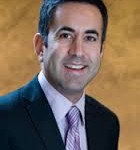

The list can go on and on because we do believe very strongly that in order to be a part of the community we need to be involved in all the surrounding communities. We need to know what we do is not only helping the community, but helping those who need it most and partnering with others to help their cause.
What are your projected launch dates for K-HUB?
We are gearing up for the office to open its doors on May 1st and the makerspace to be fully open and operational by June and the start of summer.
How can your target audience find information about office space and rental rates?
Check out www.khub.ca and give me a call at 250-300-8724 for rates and a tour.
